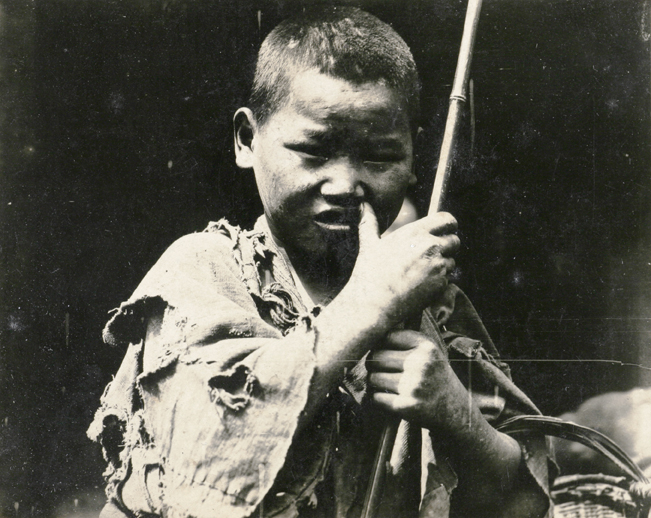Maura Elizabeth Cunningham who is our guest blogger this week, is a historian and writer based in Shanghai. Follow her on Twitter @mauracunningham.
The Americans and Europeans who came to China in the first half of the twentieth century often expressed dismay at the number of beggar children on Chinese streets, particularly in the city of Shanghai. They worried, as did many Chinese government officials, that these children would grow up to rely on charitable handouts, unable to support themselves or their families. In Shanghai, Chinese philanthropists opened a number of institutions meant to train poor children and young beggars rounded up by the police in a range of crafts, such as rattan-work, shoemaking, weaving, and printmaking. These vocational schools were intended to prevent the scourge of urban poverty from being transmitted to the next generation.
While most pitied indigent youths like the boy pictured here, foreigners also sometimes demonstrated a wariness of Shanghai’s beggar children and depicted them as wily, if charming, predators who knew an easy mark when they saw one. As an essay published in a 1920 collection, With Our Missionaries in China, stated ‘we must not forget the beggar children, with their shrewd devices for drawing the reluctant coppers from the fingers of the foreigners. Many of these beggar children, in Shanghai at least, are plump, and rosy (under the dirt), and well fed. Begging is their trade …’ [1]
Articles and Letters to the Editor in Shanghai’s North-China Daily News repeated this accusation time and again over the decades, as expatriates in the city vacillated between feeling genuine pity for impoverished youth and suspecting that these children (at the direction of their families) were exploiting soft-hearted foreigners for money.
The numbers of beggar children in Shanghai increased during the Anti-Japanese War and grew even further during the civil war years as the city filled with refugees and displaced persons. By the time of the PRC’s founding, the sight of “wandering children” (liulang ertong) living on Shanghai’s sidewalks was a common one, as was the collection of frozen children’s corpses by benevolent societies during the bitter winter months.After 1949, the new CCP-led Shanghai municipal government made the elimination of child beggars an early goal, one which would improve both the youngsters’ lives and the city’s appearance. The authorities began rounding up as many of the beggar youth as they could find; the children first went to an orphanage in Shanghai before being moved to an institution in Jiangsu Province in the spring of 1950, intended to provide them with more space and fresh countryside air. Within a few short years of the PRC’s founding, it seemed that Shanghai had eliminated the child beggar menace that had plagued the metropolis for so many decades. ‘These children were destroyed and abandoned by the Old Society,’ a 1952 children’s book on the topic proclaimed, ‘[but] luckily, they are growing up during the era of Mao Zedong, which has ended their wandering lives.’ [2]

